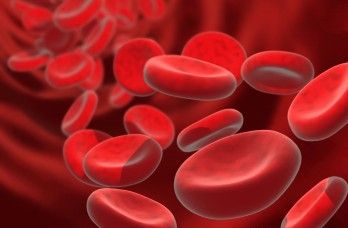FDA Accepts Linvoseltamab BLA for Review in R/R Multiple Myeloma
Efficacy results from the phase 1/2 LINKER-MM1 trial evaluating linvoseltamab in relapsed or refractory multiple myeloma support the decision.
Efficacy results from the phase 1/2 LINKER-MM1 trial evaluating linvoseltamab in relapsed or refractory multiple myeloma support the decision.

The FDA has accepted for review a biologics license application (BLA) resubmission for linvoseltamab as a treatment for adult patients with relapsed or refractory multiple myeloma, according to a news release from the drug’s developer, Regeneron Pharmaceuticals.1
Specifically, the patient population includes those with at least 4 prior lines of therapy or those with 3 prior lines of treatment and refractory disease after the last line. The FDA accepted the resubmitted BLA after the resolution of third-party manufacturing issues associated with prior submissions for linvoseltamab. The agency assigned a target date of July 10, 2025, for this BLA.
The decision is supported by results from the phase 1/2 LINKER-MM1 trial (NCT03761108) evaluating linvoseltamab in patients with relapsed or refractory multiple myeloma. Findings were previously published in the Journal of Clinical Oncology.2
Data revealed that among patients who received 200 mg of linvoseltamab (n = 117), the overall response rate (ORR) was 70.9%, with 63.2% of patients achieving at least a very good partial response (VGPR) and 49.6% of patients achieving a complete response (CR) or better. Additionally, among patients who achieved a CR and were evaluable for minimal residual disease (MRD; n = 21), the MRD-negative rate was 90.5%.
Additional data revealed that among the 200 mg population, the median time to PR or better was 1 month (range, 0.5-6.3), the median time to VGPR or better was 2.6 months (range, 0.7-15.7), and the median time to CR or better was 8.5 months (range, 1.6-14.1). The Kaplan-Meier (KM) estimate for median duration of response (DOR) was 29.4 months (95% CI, 19.2-not evaluable [NE]), and the predicted response rate at 12 months was 80.9% (95% CI, 70.3%-88.0%). The KM-estimated median progression-free survival (PFS) and overall survival (OS) were not reached (95% CI, 17.3-NE) and 31.4 months (95% CI, 21.6-NE), respectively, with KM-estimated 12-month PFS and OS rates of 70.0% (95% CI, 70.3%-88.0%) and 75.3% (95% CI, 66.0%-82.3%).
“200 mg [of] linvoseltamab demonstrated high efficacy in patients with late-stage [relapsed or refractory multiple myeloma], including patients with high disease burden and high-risk features which is noteworthy in the context of other approved drugs in this class,” Naresh Bumma, MD, assistant professor in the division of Hematology at The Ohio State University Comprehensive Cancer Center, wrote in the publication with study coinvestigators.2 “A response-adapted regimen allowed patients treated at 200 mg who experience deep responses (≥VGPR) to shift to once every 4-week dosing after 24 weeks on study; this regimen maximized patient convenience, and was associated with both sustained efficacy, and a decrease in infection rate over time, particularly among patients with deep responses.”
A total of 282 patients with relapsed or refractory multiple myeloma were enrolled and treated with linvoseltamab on the trial. Of those patients, 117 were treated with 200 mg, and 104 were treated with 50 mg of linvoseltamab. As of the data cutoff date of January 6, 2024, treatment was ongoing in 35% and 11% of patients receiving 200 mg or 50 mg of the agent, respectively.
In the 200 mg cohort, the median age was 70 years (range, 37-91), with 54.7% of patients identified as males, and 70.9% of this cohort was White. Patients treated with 200 mg of the agent had an ECOG performance status of 1 (72.6%) or 0 (27.4%), primarily had International Staging System stage I (41.9%) or II (35.0%) disease, and 39.3% had high risk cytogenetics. A total of 55.6% of patients had a bone marrow plasma-cell percentage of less than 50%, 65.8% had prior autologous transplant, and 76.9% were at least penta-exposed.
The primary end point of the study was ORR per independent review committee assessment. Secondary end points included DOR, PFS, investigator-assessed ORR, MRD rate, OS, and safety.
Of patients treated in the 200 mg arm, all patients experienced treatment emergent adverse events (TEAEs). A total of 73.5% experienced grade 3 or 4 TEAEs. Discontinuation due to TEAEs occurred in 18.8% of patients, with 7.7% of patients experiencing discontinuations deemed related to linvoseltamab treatment. TEAEs leading to death occurred in 5.1% (n = 6) of patients, 5 of which occurred as a result of infection.
References
- Linvoseltamab BLA accepted for FDA review for the treatment of relapsed/refractory multiple myeloma. News release. Regeneron Pharmaceuticals. February 11, 2025. Accessed February 11, 2025. https://tinyurl.com/y7hjbdub
- Bumma N, Richter J, Jagannath S, et al. Linvoseltamab for treatment of relapsed/refractory multiple myeloma. J Clin Oncol. 2024;42(22):2702-2712. doi:10.1200/JCO.24.01008
Newsletter
Stay up to date on recent advances in the multidisciplinary approach to cancer.